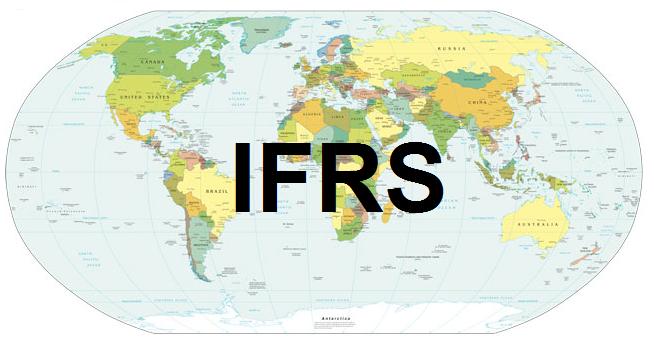International Financial Reporting Standard IFRS 17 was issued on 18 May 2017 by the International Accounting Standards Board.
IFRS 17 demonstrates the principles for the recognition, measurement, presentation, and disclosure of insurance contracts within the scope of the Standard.
Contents
- Overview of IFRS 17
- Why should you have to care about it?
- What are the main differences between IFRS 17 and IFRS 4?
- Why there is a need to change?
- Who would be affected by the change?

The objective of IFRS 17 is to ensure that an entity can faithfully represent those contracts based on relevant information that an entity provides. This information provides a basis for users of financial statements to assess insurance contracts’ effects on the entity’s financial position, financial performance, and cash flows.
In other words, IFRS 17 offers a simplified measurement approach, or premium allocation approach, for more uncomplicated insurance contracts.
IFRS 17 will become effective on or after 1 January 2023.
Read more: An Introduction to International Financial Reporting Standards (IFRS)
Overview of IFRS 17
Objective
The objective of IFRS 17 is to establish principles for the recognition, measurement, presentation, and disclosure of insurance contracts within the scope of the Standard. Regarding requirements, the Standard entails insurers providing clarity and consistently measured information and disclosing them in a uniform presentation.
Under IFRS 17, insurance contracts will:
- Reflect fundamental economic issues and provide relevant and transparent information as well as updated assumptions, options and guarantees
- Increase transparency about profitability by defining the source of earnings listed in the income statement and splitting contracts into groups or cohorts based on sets of criteria.
- Increase comparability among insurers, subsidiaries, and industries.
Read more: How Raymond James Financial Slashed 50% of Its Reporting Time
Scope
An entity shall apply IFRS 17 Insurance Contracts to:
- Insurance and reinsurance contracts that it issues;
- Reinsurance contracts it holds;
- Investment contracts with discretionary participation features (DPF) it issues, provided it also issues insurance contracts.
Why should you have to care about it?
IFRS 17 is a once-in-a-lifetime change for insurance companies. It provides a set of new rules to improve the transparency of financial reporting for insurance companies and is comparable to those of other industries. This will be a welcome change for analysts and other stakeholders.
With the establishment of new rules, IFRS 17 offers seven benefits to the insurance industry, such as:
- Liabilities valued at market value: IFRS 17 will initiate better product design and greater transparency by bringing the valuation of insurance contracts in line with the assets and valuations made in other industries.
- A more accurate reflection of profits: IFRS 17 measures profit in line with the services performed and spreads it over the contract’s life in a series of smaller cash flows, giving more insight into how profit emerges. Moreover, the standard excludes deposit coverage from revenue calculations, which can therefore help better reflect reality.
- Near global consistency: Particularly for multinational insurers, it will reduce the long-term costs of compliance and make it easier to compare business units and aggregate results and financial statements
- Collaboration between actuaries and accountants: Even though both actuaries and accountants look after the interests of stakeholders and help manage insurers’ finances and risks, there is still a lack of interaction or understanding of each other’s activities in many organisations. IFRS 17 can drive them to work together and establish mutual respect and cooperation.
- Better governance of actuarial systems: IFRS 17 offers governance standards improvements by demanding control and automated use of actuarial systems. This not only helps companies to achieve compliance but also reduces costs, minimises manual errors, and makes it easier to access risk insight. Hence, this can lead to better management of the business.
- Greater protection for policyholders: IFRS 17 will help strengthen insurance company balance sheets and provide better protection to policyholders as a result.
- Investor confidence: All of the above improvements to the accounting standard offer investors a golden opportunity to gain proper insight into insurance companies, allowing them to compare one firm to another more consistently. Therefore, this can improve investors’ confidence and understanding of insurers.
Read more: How Raymond James Financial Slashed 50% of Its Reporting Time
What are the main differences between IFRS 17 and IFRS 4?
The consistency of the application of accounting treatments to areas such as revenue recognition and liability valuation is the key difference between IFRS 17 and IFRS 4. Within IFRS 4, entities were free to derive their own interpretations of revenue recognition and calculation of reserves. For instance, companies were able to use their discretion concerning risk adjustment in the liabilities under IFRS 4, while in IFRS 17, it is now mandatory.
The table below details the fundamental differences between IFRS 4 and IFRS 17:
IFRS 4 |
IFRS 17 |
|
|
Why there is a need to change?
There are existing issues under IFRS 4, therefore IFRS 17 (as known as IFRS 4 phase II) was launched to improve accounting. The existing issues may conclude 4 key points and this is how IFRS 17 can provide improvement:
|
Existing issues |
IFRS 17 requirements |
|
|
Who would be affected by the change?
IFRS 17 applies to insurance contracts. In other words, IFRS 17 affects any company that writes insurance contracts, such contracts are generally not written by companies outside of the insurance industry.
The most listed insurers in IFRS Standard Fact Sheets use IFRS Standards, and their total assets as insurers using IFRS Standard in 2015 were recorded as up to $13 trillion.
 English
English  Vietnamese
Vietnamese 


